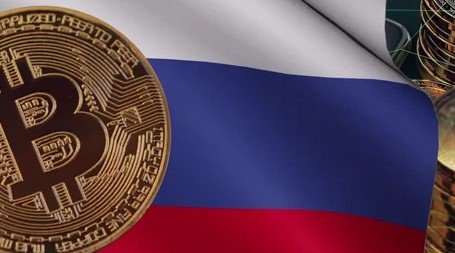Russia has officially legalized the use of cryptocurrency in foreign trade — a move that marks one of its boldest economic experiments since being cut off from Western financial systems. The decision signals Moscow’s latest attempt to outsmart sanctions that have throttled its access to global banking.
Moscow Bets Big on Digital Currencies to Keep Trade Alive
The announcement came after months of internal wrangling between Russia’s Ministry of Finance and its Central Bank. Both agencies, once divided over digital assets, have now agreed to create a legal framework allowing cryptocurrency use for cross-border payments.
Finance Minister Anton Siluanov called the system “a lifeline for sanctioned businesses.” His words carry weight — for many exporters, foreign exchange channels have dried up since Russia’s exclusion from the SWIFT network in 2022.
Officials said the measure won’t affect everyday citizens. “Crypto won’t replace the ruble,” Siluanov clarified, stressing that domestic crypto payments remain illegal.

Still, the government believes digital settlements could shield Russian trade from Western pressure. And for a country whose economy has been squeezed by everything from energy bans to frozen assets, that’s no small thing.
A Sanctions-Proof Payment Channel
The logic behind the move is straightforward: if Western institutions block your payments, build your own system.
Russia’s new framework allows companies to settle trade deals with partners abroad using cryptocurrency, bypassing banks that are cut off from international finance. It’s a strategy that blends pragmatism with defiance — one that could quietly reshape parts of global trade.
In a briefing, the Finance Ministry said the infrastructure would focus on three key objectives:
-
Protecting Russian exporters and importers from payment disruptions.
-
Strengthening trade relations with non-sanctioning partners such as China, India, and Turkey.
-
Ensuring all crypto transactions comply with state financial laws.
The plan follows a pilot project launched in September that tested crypto payments between select firms under a so-called “experimental legal regime.” Early results, officials said, were “encouraging enough” to expand nationwide.
Some insiders describe it as Russia’s “parallel banking system” — one that relies on blockchain instead of SWIFT codes.
The War Between Isolation and Innovation
Since early 2022, Western sanctions have reshaped Russia’s economy. From frozen reserves to export bans, the country has had to improvise to keep money flowing. The SWIFT cutoff was particularly damaging.
Without access to the global messaging network used by over 11,000 banks, Russian financial institutions struggled to settle even routine trades. Companies faced payment delays, currency shortages, and a growing reliance on barter-like arrangements.
Cryptocurrency, while volatile, offers something the traditional system doesn’t: political neutrality. Bitcoin, Ether, and other coins can move across borders without permission from U.S.-aligned financial gatekeepers.
Yet this freedom brings new risks. Crypto markets are notoriously unstable. Prices swing wildly. Regulation is patchy. And Western governments have already warned that Moscow could exploit digital currencies to dodge sanctions.
Still, for the Kremlin, the tradeoff seems worth it. As one Moscow economist put it, “If your hand is tied, you learn to use your elbow.”
How the System Will Work
Russia’s new framework is built around centralized oversight — a hybrid of innovation and control. All foreign trade settlements in crypto will pass through a government-monitored platform, ensuring compliance with national laws.
The Central Bank will handle the regulatory supervision, while the Federal Financial Monitoring Service (Rosfinmonitoring) will enforce anti-money laundering (AML) and know-your-customer (KYC) rules.
To visualize the system, here’s a simplified outline:
| Entity | Responsibility | Oversight Mechanism |
|---|---|---|
| Ministry of Finance | Policy formulation, legal framework | Annual reporting to Duma |
| Central Bank | Transaction authorization, exchange rate control | Real-time blockchain monitoring |
| Rosfinmonitoring | AML/KYC enforcement | Data sharing with law enforcement |
Officials have made clear that the entire structure will be state-controlled. No private exchanges, no peer-to-peer loopholes.
One insider described it as “a closed loop — transparent for the government, opaque to the West.”
Trade Partners Eye Opportunity — and Risk
For Russia’s trading partners, this shift opens a new chapter. Countries such as Iran, India, and even parts of Africa have quietly explored similar alternatives to Western financial infrastructure.
But cooperation won’t be simple. Each country’s crypto laws differ, and volatility remains a major concern.
Some analysts believe India might tread cautiously. “New Delhi prefers rupee-based trade settlements, not Bitcoin,” said a senior energy analyst in Mumbai. China, too, may resist direct crypto deals given its strict domestic restrictions.
Still, bilateral workarounds are already forming. Turkey’s exporters, for example, have shown interest in crypto-based invoicing for commodities like grain and metals. For smaller economies trading with Russia, crypto could mean fewer delays and more flexibility.
The larger question — can this digital detour meaningfully offset Western pressure? — remains unanswered.
A Tightrope Between Control and Innovation
Russia’s move also reveals a curious contradiction. The same government that cracked down on private crypto trading is now legalizing it for state-approved commerce.
That contradiction reflects the Kremlin’s broader approach: embrace technology when it serves national interests, restrict it when it threatens them.
Inside Russia, crypto miners and fintech entrepreneurs remain cautious. Some worry that the system could tighten state control over blockchain innovation rather than promote it. Others see opportunity in government-backed digital trade infrastructure.
Either way, it’s a balancing act — one that pits economic necessity against ideological caution.
And while Western capitals may frown at the development, they can’t easily stop it. Crypto, after all, doesn’t need permission to move.
What Comes Next for the Global Crypto Map
With Russia entering the crypto trade space, the global digital currency landscape could change in subtle but profound ways.
Experts predict more nations under sanctions could follow suit — Iran, North Korea, and Venezuela have already tested similar systems. Meanwhile, the U.S. and EU may tighten oversight on blockchain networks used for cross-border transfers.
There’s also the question of scalability. Can blockchain handle the volume of multi-billion-dollar trade flows? The answer isn’t clear. But the political message is: Russia isn’t waiting for permission.
If this experiment succeeds, it could mark the start of a shadow financial network — one that blurs the line between national currencies and digital coins.
For now, Russia’s bet is both desperate and daring. And whether it sparks a new era of digital trade or ends as another bureaucratic maze, one thing’s certain: sanctions have pushed Moscow to rethink money itself.








